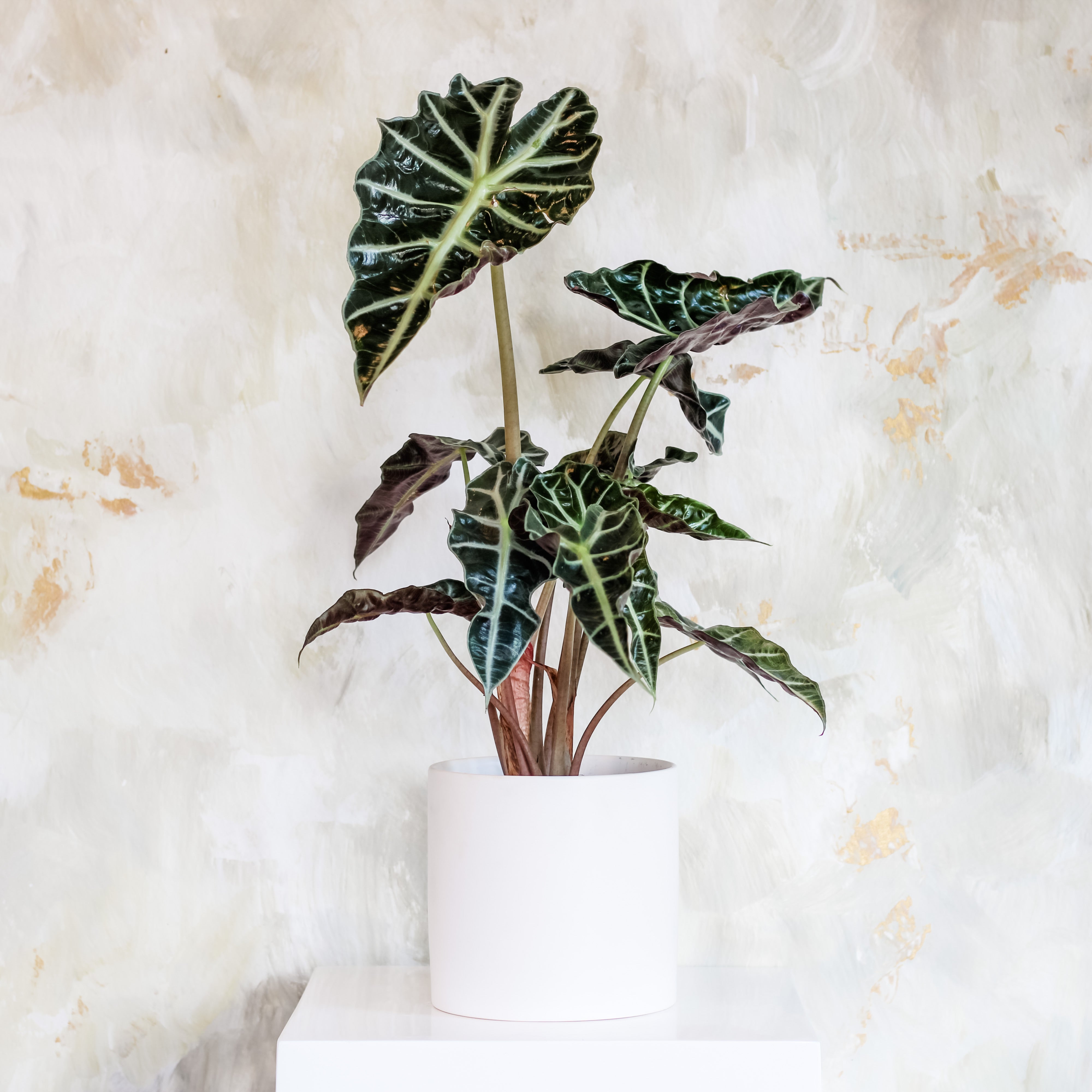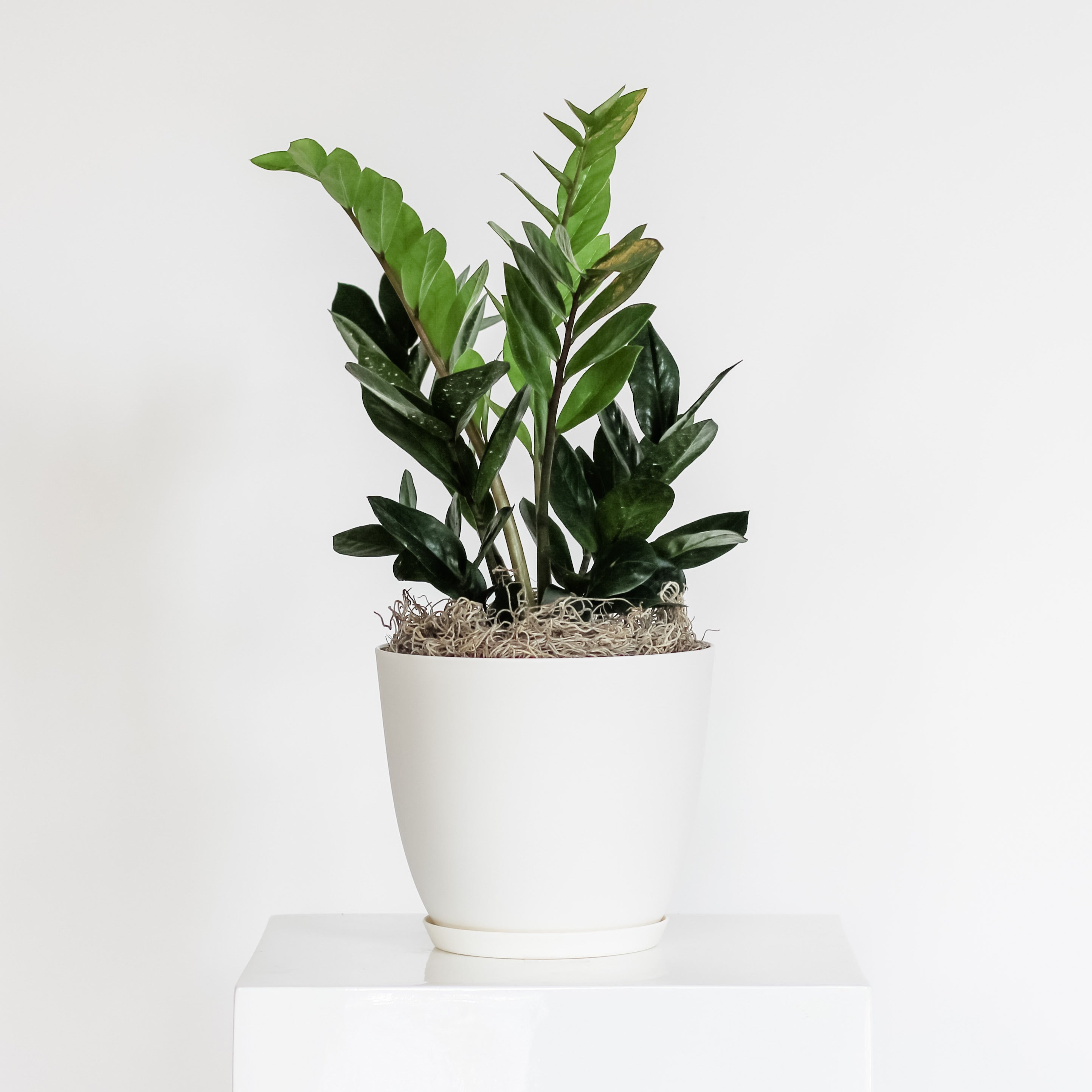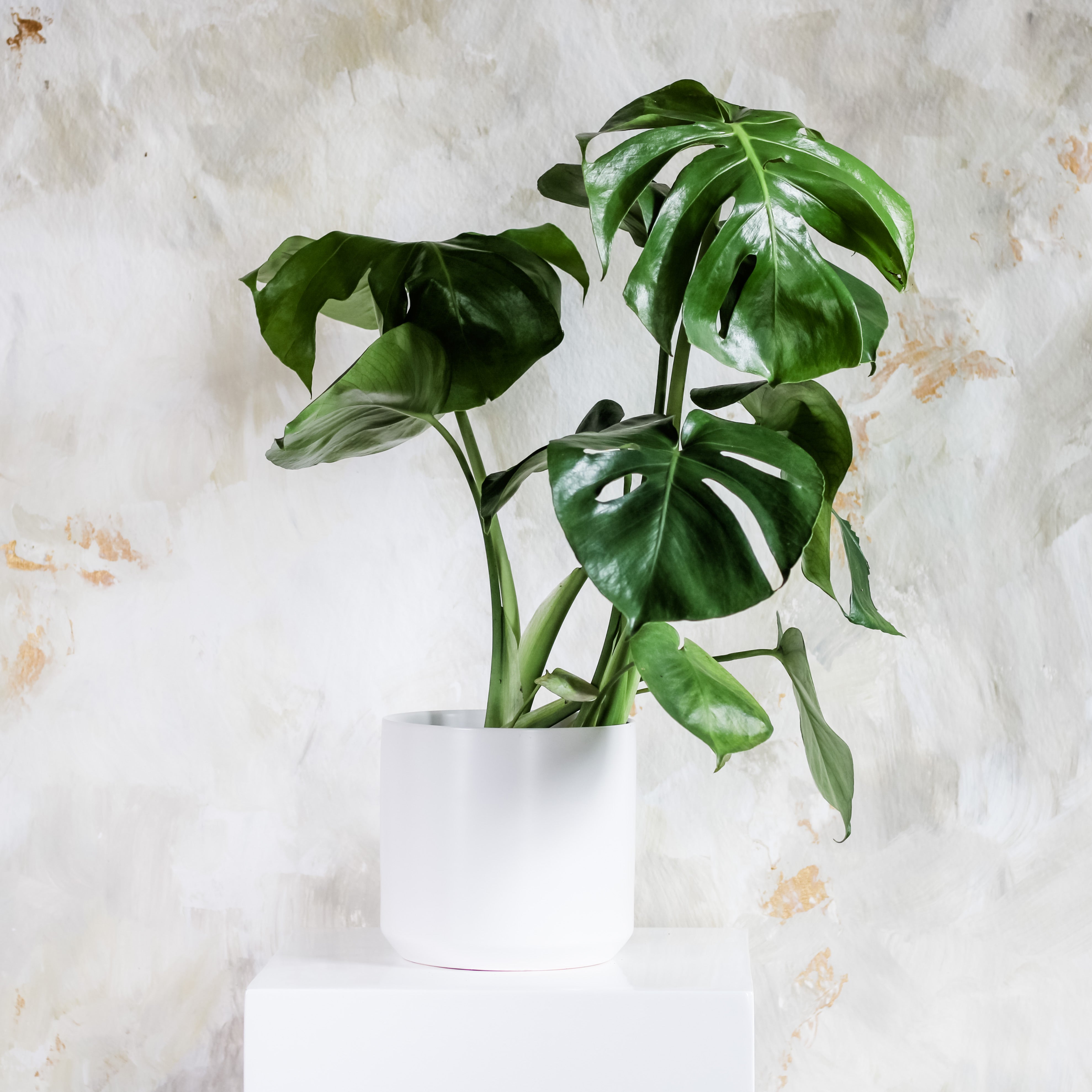
Alocasia
Alocasia plants come in many different shapes, sizes, and colors, but they all bring a fresh tropical vibe to any space they inhabit! While they can be a bit more high-maintenance compared to other houseplants, with the right care and attention, they’ll reward you with their unique beauty. Once you find the perfect spot with just the right amount of light and humidity, your Alocasia will thrive and become a stunning centerpiece in your home.
Pet Toxicity
Alocasia plants are toxic to animals and humans if ingested.
Light
Alocasia plants prefer bright, indirect light, or partial shade, avoid direct sunlight as it can cause the leaves to burn. Grow lights can help to supplement light in the darker winter months.
Water Requirements
Water your Alocasia when the top 1-2 inches of soil are dry, typically every 1-2 weeks. While they enjoy consistently moist soil, they’re highly susceptible to root rot, so it’s crucial to make sure the pot has good drainage and isn’t sitting in water. Alocasias also thrive in a more humid environment, so consider placing them in a humidity-rich area or using a humidity tray to keep them happy and healthy.
Watch out for…
Alocasia plants can be sensitive to the minerals or chlorine found in tap water. To avoid this, let tap water sit for 24 hours before watering, or use distilled water. If you notice yellow or drooping leaves, soft stems, or a musty smell from the soil, these are signs of overwatering. However, if the edges of the leaves turn brown or crispy they may be getting too much direct light.




Leave a comment
This site is protected by hCaptcha and the hCaptcha Privacy Policy and Terms of Service apply.